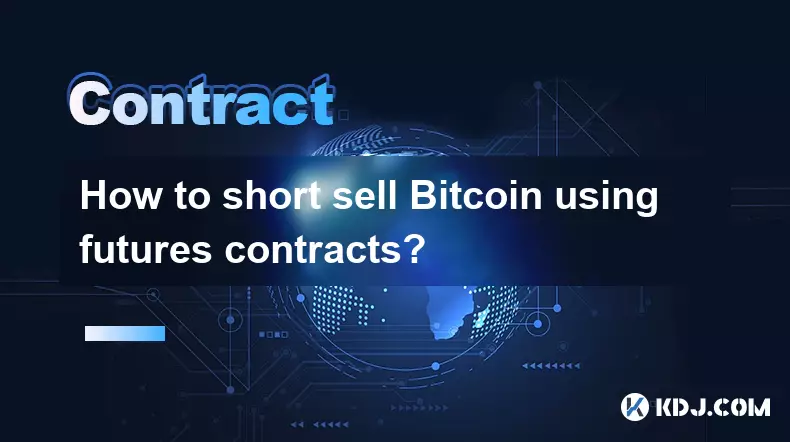-
 bitcoin
bitcoin $118548.520763 USD
3.67% -
 ethereum
ethereum $4352.564943 USD
4.79% -
 xrp
xrp $2.964058 USD
4.22% -
 tether
tether $1.000565 USD
0.05% -
 bnb
bnb $1028.372955 USD
1.46% -
 solana
solana $221.373507 USD
6.00% -
 usd-coin
usd-coin $0.999933 USD
0.02% -
 dogecoin
dogecoin $0.248633 USD
6.85% -
 tron
tron $0.341444 USD
2.38% -
 cardano
cardano $0.852946 USD
5.82% -
 hyperliquid
hyperliquid $47.869306 USD
6.15% -
 chainlink
chainlink $22.561476 USD
6.01% -
 ethena-usde
ethena-usde $1.001258 USD
0.05% -
 avalanche
avalanche $30.660000 USD
2.06% -
 stellar
stellar $0.400917 USD
9.76%
What are the differences between Bitcoin contract trading, leverage trading and fiat currency trading?
Leverage trading amplifies potential profits and losses, necessitating careful risk management and margin requirement adherence.
Nov 15, 2024 at 10:12 am

The realm of cryptocurrency trading encompasses a diverse spectrum of options, each tailored to distinct investment strategies and risk appetites. Among the most prevalent methods are Bitcoin contract trading, leverage trading, and fiat currency trading. While these approaches share the common goal of profiting from price fluctuations, they differ markedly in their underlying mechanisms, risk profiles, and potential rewards. This article delves into the nuances of each trading approach, highlighting their key characteristics and guiding investors towards informed decision-making.
Understanding Bitcoin Contract Trading- Mechanism: Bitcoin contract trading involves entering into agreements to buy or sell Bitcoin at a predetermined price on a specific future date. Unlike spot trading, where immediate delivery and settlement occur, contract trading allows traders to speculate on Bitcoin's future price movements without actually owning the underlying asset.
- Leverage: Contract trading often incorporates leverage, enabling traders to amplify their potential profits (and losses) by borrowing funds from the exchange. This magnifies the impact of price fluctuations, potentially leading to substantial gains or losses.
- Settlement: Upon contract expiration, traders must either fulfill their contractual obligations (by purchasing or selling Bitcoin) or settle the difference in cash. This flexibility allows traders to manage risk and adjust positions based on market conditions.
- Mechanism: Leverage trading, as the name suggests, involves using borrowed funds to enhance trading capacity. In this approach, traders can magnify their capital and potentially generate higher returns.
- Risk Management: Leverage trading amplifies both potential profits and losses, making risk management crucial. Traders must carefully consider their tolerance for risk and employ appropriate strategies to mitigate potential losses.
- Margin Requirements: Exchanges typically impose margin requirements, which dictate the minimum equity a trader must maintain to engage in leverage trading. This ensures that traders have sufficient funds to cover potential losses.
- Mechanism: Fiat currency trading involves the direct exchange of fiat currencies, such as USD, EUR, or GBP, for Bitcoin. Unlike contract or leverage trading, fiat currency trading results in the immediate ownership of the underlying asset.
- Simplicity: Fiat currency trading is generally considered the most straightforward approach for beginners, as it eliminates the complexities associated with leverage or contract expiration dates.
- Limited Leverage: Fiat currency trading typically does not offer leverage, reducing the potential for both substantial gains and losses. This characteristic appeals to risk-averse individuals seeking a more conservative approach.
- Risk: Leverage trading carries the highest risk due to the amplified impact of price fluctuations. Contract trading also involves a degree of risk, albeit lower than leverage trading. Fiat currency trading poses the lowest risk, as traders only invest their own capital.
- Reward: The potential rewards of leverage trading are also the highest, followed by contract trading and fiat currency trading. However, the higher potential rewards are accompanied by increased risk.
- Complexity: Contract trading is the most complex approach, requiring an understanding of futures contracts and expiration dates. Leverage trading is also relatively complex, while fiat currency trading is the most straightforward.
The choice between Bitcoin contract trading, leverage trading, and fiat currency trading hinges on an individual's risk appetite, trading experience, and financial objectives. Each approach offers distinct advantages and drawbacks, and investors should carefully evaluate their own circumstances before committing to a specific strategy. By understanding the intricacies of each trading method, investors can harness its potential while mitigating potential risks.
Disclaimer:info@kdj.com
The information provided is not trading advice. kdj.com does not assume any responsibility for any investments made based on the information provided in this article. Cryptocurrencies are highly volatile and it is highly recommended that you invest with caution after thorough research!
If you believe that the content used on this website infringes your copyright, please contact us immediately (info@kdj.com) and we will delete it promptly.
- BlockDAG, DOGE, HYPE Sponsorship: Crypto Trends Shaping 2025
- 2025-10-01 00:25:13
- Deutsche Börse and Circle: A StableCoin Adoption Powerhouse in Europe
- 2025-10-01 00:25:13
- BlockDAG's Presale Buzz: Is It the Crypto to Watch in October 2025?
- 2025-10-01 00:30:13
- Bitcoin, Crypto, and IQ: When Genius Meets Digital Gold?
- 2025-10-01 00:30:13
- Stablecoins, American Innovation, and Wallet Tokens: The Next Frontier
- 2025-10-01 00:35:12
- NBU, Coins, and Crypto in Ukraine: A New Yorker's Take
- 2025-10-01 00:45:14
Related knowledge

What is the difference between futures and perpetual contracts for Bitcoin?
Oct 02,2025 at 11:54pm
Understanding Bitcoin Futures Contracts1. Bitcoin futures are derivative instruments that allow traders to speculate on the future price of Bitcoin at...

What is the maintenance margin for Bitcoin contracts?
Oct 02,2025 at 01:36am
Decentralized Exchanges Gain Momentum in 20241. Decentralized exchanges (DEXs) have seen a significant rise in trading volume, surpassing centralized ...

How to calculate the required initial margin for Ethereum contracts?
Oct 01,2025 at 06:01am
Understanding Initial Margin in Ethereum Futures1. The initial margin for Ethereum futures contracts represents the minimum amount of capital a trader...

What is a perpetual swap for Bitcoin contracts?
Oct 01,2025 at 08:18am
Understanding Perpetual Swaps in Bitcoin Trading1. A perpetual swap is a type of derivative contract that allows traders to speculate on the price of ...

What is the best platform for trading SOL contracts?
Oct 01,2025 at 06:36am
Understanding the Role of Decentralized Exchanges in Modern Crypto Trading1. Decentralized exchanges (DEXs) have reshaped how traders interact with di...

How to short sell Bitcoin using futures contracts?
Oct 01,2025 at 02:54am
Understanding the Role of Decentralized Exchanges in Crypto Trading1. Decentralized exchanges (DEXs) have become a cornerstone of the cryptocurrency e...

What is the difference between futures and perpetual contracts for Bitcoin?
Oct 02,2025 at 11:54pm
Understanding Bitcoin Futures Contracts1. Bitcoin futures are derivative instruments that allow traders to speculate on the future price of Bitcoin at...

What is the maintenance margin for Bitcoin contracts?
Oct 02,2025 at 01:36am
Decentralized Exchanges Gain Momentum in 20241. Decentralized exchanges (DEXs) have seen a significant rise in trading volume, surpassing centralized ...

How to calculate the required initial margin for Ethereum contracts?
Oct 01,2025 at 06:01am
Understanding Initial Margin in Ethereum Futures1. The initial margin for Ethereum futures contracts represents the minimum amount of capital a trader...

What is a perpetual swap for Bitcoin contracts?
Oct 01,2025 at 08:18am
Understanding Perpetual Swaps in Bitcoin Trading1. A perpetual swap is a type of derivative contract that allows traders to speculate on the price of ...

What is the best platform for trading SOL contracts?
Oct 01,2025 at 06:36am
Understanding the Role of Decentralized Exchanges in Modern Crypto Trading1. Decentralized exchanges (DEXs) have reshaped how traders interact with di...

How to short sell Bitcoin using futures contracts?
Oct 01,2025 at 02:54am
Understanding the Role of Decentralized Exchanges in Crypto Trading1. Decentralized exchanges (DEXs) have become a cornerstone of the cryptocurrency e...
See all articles










































































